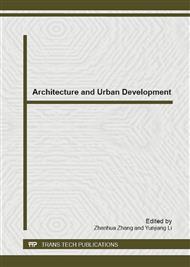p.379
p.384
p.388
p.393
p.400
p.404
p.409
p.413
p.420
Effect of Sliding Speed on Friction and Wear Behaviors of Copper Rubbing against Carbon Material with Electric Current
Abstract:
In this paper, many experiments on effect of the sliding speed on friction and wear behaviors of pure carbon strip/copper contact line under the AC electric field are conducted on a ring-on block high-speed sliding tester. The result indicates that coefficient of friction increases with increasing sliding speed. And the friction coefficient without electric current is much larger than that with electric current. While the wear rate of pure carbon strips without electric current is much smaller than that with electric current. And wear rate slightly increases with the increase of the sliding speed. Comparison of worn surface profiles in different electric current, it can be found that the profile of worn surface increases with increasing electric current.
Info:
Periodical:
Pages:
400-403
Citation:
Online since:
November 2012
Authors:
Keywords:
Price:
Сopyright:
© 2012 Trans Tech Publications Ltd. All Rights Reserved
Share:
Citation:


